Introduction of Concrete Blocks
Important Point
Concrete blocks, widely known as Concrete Masonry Unit (CMU), encompass various types of blocks such as solid concrete blocks, hollow concrete blocks, and more These types of concrete blocks have some advantages with compare to brick and stone masonry blocks. This concrete blocks may be solid in shape or hollow
The normal size of concrete block is 39cm x 19cm x (30cm or 20 cm or 10cm) or 2/4/6/8/10/12 inches. Generally cement, aggregate (coarse and fine) and water is used to construct those concrete blocks. 1:6 is the cement-aggregate ratio where 60% is for fine aggregate and 40% is for fine aggregate.
The normal minimum strength of these blocks are 3N/mm2.
Also, read: What Is Concrete | 31 Different Types of Concrete
Types of Concrete Blocks
Generally various types of concrete are available in the market, those types are
- Solid concrete block
- Hollow concrete block
- Concrete corner block
- Concrete stretcher block
- Jamb concrete block
- Partition concrete block
- Concrete pillar block
- Lintel blocks
- Bull nose concrete blocks
- Frogged brick block
- Paving blocks
- Light aerated concrete blocks
- Cellular lightweight concrete blocks
- Fly ash blocks
- Concrete bricks
Useful Article for You
- What Is a Contour Interval
- What Is Tile
- What Is the Difference Between a Shower Pan and a Shower Base?
- What Is a Window Panel
- Type of Arch
- What Is the Measurement for a Queen Size Bed
- What Is Considered Livable Space
- What Is One Way You Can Save Electricity?
- What Is Mdf Mean
- What Is a Bundle of Shingles
- What Is a Gallon of Water Weigh
- What Is Sand Blasting
- What Is a Span Bridge
- What Is the Little Black Diamond on a Tape Measure
- What Is a Louvered Door
- What Is a Spread Footing
- What Is Leveling
- Different Types of Beam
- What Is Pedestal
- What Is Plumbing Fixtures
- What Is Slab Construction
- What Is Calacatta Quartz
- What Is Auxiliary View
- Sheepsfoot Roller
- What Is 1 Flight of Stairs
- What Is Refractory Cement
- Dry Pack Concrete
- What Is Luminous Flux Vs Lumens
- What Is a Frost Wall
- What Is an Undercoat
- What Is Road Pavement
- Arch Foundation
- What Is a Stair Landing
- What Is Stone Masonry
- What Is a Spandrel Beam
- What Is Pier and Beam Foundation
- What Is a Pile Cap
- What Is a Mat Foundation
- What Is a Floating Slab
- What Is the Purpose of Foundation
- What Is Modulus of Rupture
- What Is a Flush Door
- What Is Residential Construction
- What Is the Best Foundation for a House
- What Is a Benchmark in Surveying
- What Is a Engineering Drawing
- What Is an Admixture
- What Is a Monolithic Slab Foundation
- What Is the Standard Size Water Supply Line
- What Is the Difference Between Tension and Compression?
- What Is a Tremie
- What Is Tributary Area
- What Is Shoring Construction
- What Is a Cason
- What Is Wall Putty
- What Is the Difference Between Mortar and Concrete
- What Is Bhk
- What Is Sbc of Soil
- What Is Plinth Level
- What Is Water Proofing
- What Is Mix Design of Concrete
- What Is Fine Aggregate
- What Is Retention Money
- What Is Design Mix
- What Is Isometric Scale
- What Is Development Length
- What Is Superelevation
- What Is Wall Made Of
- What Is Micro Piling
- What Is Soil Stack
- What Is a Half Wall Called
- What Is Flagstone
- What Is a Cinder Block
- What Is Floors
- What Is a Parapet in Construction
- What Is Concept Drawing
- What Is a 30 Degree Angle
- What Is a Mezzanine Level
- What Is Plinth Area
- What Is Precipitation
- What Is a Soffit
- What Is the Difference Between Residual and Transported Soil
- What Is a Drop Manhole
- What Is Oblique View
- What Is a Flyover Bridge
- What Is Tie Beam
- What Is the Cost of 1 Bag Cement
- What Is Well Foundation
- What Is the Principle of Chain Surveying
- What Is Dlc in Road Construction
- What Are the Advantages of Levelling
- What Is Hardened Concrete
1. Solid Concrete Blocks
Solid concrete blocks, one of the different types of concrete blocks, are widely used in construction but they are very heavy in weight because it is manufactured from dense concrete.
This types of bricks are strong in nature and it provides good stability. Solid Concrete blocks are very suitable in load bearing structure and this is highly preferable. Solid concrete blocks are available in many size and this is generally larger than normal clay bricks.
2. Hollow Concrete Blocks
Hollow concrete blocks, representing one of the types of cinder blocks, have more than 25% of gross concrete. This type of blocks are light weight and easy to install in the construction site. Hollow concrete blocks are divided into several components and they are divided into some types, those are
3. Concrete Corner Block
This type of concrete blocks are used in the corner part of concrete masonry. These blocks are widely used in window and door openings. These blocks are laid in the same plane and locked with the other stretcher bond.
Also, read: What Is Isometric Projection | Principle of Isometric Projections | Isometric Scale
4. Concrete Stretcher Block
Concrete stretcher blocks are also used the corner of the masonry. Concrete hollow blocks are widely used in the concrete stretcher block. Concrete stretcher blocks are laid with the parallel length to the face.
5. Jamb Concrete Block
In a building where a elaborated window opening is found then we use jamb concrete block. Stretcher and corner blocks are connected with the Jamb concrete block. In double hung window; jamb concrete blocks are used to provide some space for window members.
6. Partition Concrete Block
Partition are only constructed and used for partition purpose and the height o this type of block is slightly higher than the breadth of the block. These blocks are mainly hollow in nature and this hollow section are divided into two or three parts.
7. Concrete Pillar Blocks
Double corner block is the another name of concrete pillar block. It is generally used where two joints are clearly visible, this only happens in pillar that’s why the name of the block is concrete pillar block.
Also, read: What Is Inverted Beam | Advantages of Inverted Beam | Purpose of Inverted Beam
8. Lintel Blocks
This type of concrete blocks are used for constructing beam or lintel beam, it generally bears the upper portion load of door and window portion. These concrete blocks have a groove portion along with the length of the block. After placing the lintel blocks, it is filled with concrete and reinforcement to increase it’s strength.
9. Bull Nose Concrete Block
Bull nose concrete blocks are also used in the corner portion, the purpose of this type of block is also same. We only use this type of blocks when we want rounded edges at the corner.
10. Frogged Brick Blocks
This type of blocks have a frog portion on top surface of the block along with header and stretcher. Frog helps to hold the mortar and create a strong bond with another brick.
11. Paving Blocks
Paving blocks are generally square or rectangular in size and these blocks are constructed with reinforced cement concrete. Paving blocks are normally laid in the shoulder part of the highway and these are painted with the paint of high visibility to attract the automobile drivers.
These type of blocks are rigid in nature so it increases the probability of road accidents. Paving blocks are also used in the parks, parking area or sometime in the footpath of any road. The general dimension of the paving block is 60 mm.
Also, read: How to Building Construction Process Step by Step
Useful Article for You
- Zero Force Members
- How Much Does a Yard of Concrete Weigh
- Cmu Wall Meaning
- Gradient Road
- Budget Sunroom Ideas
- What Is Gypsum Board
- Types of Vaulted Ceilings
- Well Points
- How Does Baking Soda Remove Blood from Carpet
- What Are Forms in Construction
- How Heavy Is Dirt
- Tender Meaning in Architecture
- Dark Olive Green House
- Cast in Place Concrete
- Lean to Roof
- How Tall Is an Average Door
- Grade Beam Foundation
- Window Sill Height
- Concrete Cold Joint
- Types of Traps
- Types of Pipe
- Wood Supporting Beams
- Finishing Plaster
- Home Depot Scrap Wood
- Lvl Beam Size Calculator
- Structural Shell
- Curb Types
- Msand
- Optimum Dry Meaning
- Disadvantages of Low-E Glass
- Bridge Abutment Definition
- Build Materials List
- Composite Masonry Wall
- Is Cedar a Hardwood or Softwood
- Modified Proctor Test
- Physical Properties of Sand
- Crane Machine Construction
- Types of Gable Roofs
- Door Frame Types
- How Much Does 55 Gallons of Oil Weigh
- Dog Leg Stairs
- Concrete Salt Finish
- Westpoint Bridge Builders
- Types of Porches
- Hempcrete Disadvantages
- Roof Pitch Types
- Types of Weirs
- Asphalt Floor
- Dutch Roof
- #6 Rebar Weight Per Foot
- Prizmatic Compass
- Bond Break Concrete
- Poured Concrete Wall Cost Calculator
- How Many 60 Lb Bags of Concrete in a Yard
- Wood Fence Post Spacing Chart
- Falsework
- Design of Building Structures
- Topping Slab
- Types of Cinder Blocks
- Fresh Concrete
- Door Colors for Red Brick House
- Clear Cover Concrete
- Tiles Brand
- Cement Consumption in Plaster
- Aggregate Density Kg M3
- Weight of Concrete Slab Calculator
- Is Clay Smaller Than Silt
- How to Calculate Dead Load
- Bad Concrete Work
- Stepped Foundations
- Residential Construction Cost Estimator Excel
- Different Construction Trucks
- Septic Pump Replacement Cost
- Dead Load Calculator
- Beam Vs Column
- Concrete Mix Ratio
- Caisson Foundation
- Glulam Beam Weight Calculator
- Bituminous Pavement
- M30 Mix Ratio
- Is 2502
- Reinforced Brick Work
- Plinth Level
- Trapezoidal Footing Formula
12. Light Aerated Concrete Blocks
Light aerated concrete blocks are lightweight in nature. These blocks are constructed with Portland cement, aggregates, sand, high quality, etc. So, they are produced using caerated concrete.
13. Cellular Lightweight Concrete Block
Cellular lightweight concrete blocks are also light weight in nature. These type of blocks have good mechanical strength and low thermal conductivity property. Cellular light weight concrete block are made of low density Portland cement which have a large variety with small air bubbles.
14. Fly Ash Blocks
Fly ash blocks are light weight than the clay bricks and they are also economical than those clay bricks. They are generally made from waste materials which are come from combustion of coals in thermal power plant.
Also, read: Building Estimation Step by Step In Excel Sheet
15. Concrete Blocks
Concrete blocks, encompassing various block types like types of concrete bricks, are small rectangular symmetric blocks which create a rigid wall. These bricks have greater compressive strength than normal clay bricks and also have less water absorption property tan the clay bricks.
Concrete bricks are generally made of cement, sand, slight amount of fly ash, etc. These type of blocks are generally used in facades, fences due to it’s beautiful and modern aesthetic look.
Also, read: How to Find House Construction Cost
Type of Concrete Blocks and Their Dimensions
Concrete Block |
Dimensions |
| Hollow Concrete Block | 400 x 200 x 100 / 150 / 200 mm |
| Concrete Brick | 230 x 110 x 70 mm |
| Solid Concrete Block | 8 x 8 x 16 inch |
| Paving Block | 200 x 100 x 60 mm |
| Light Aerated Concrete Block | 600 x 200 x 100 mm |
| Cellular Lightweight Concrete Block | 24 x 8 x 4 inch |
| Fly Ash Block | 230 x 110 x 70 mm |
Concrete Blocks
Building and construction concrete block prices are $1 to $4 per block, depending on the size. Standard 8”x8”x16” concrete block prices are $1.25 to $2.50 each. The biggest 12”x8”16” cmu blocks cost $2 to $4 per block.
Concrete Block Column Foundation
Block foundations have good load-bearing strength, but their lateral strength is limited unless the block is fully grouted with rebar (which is rarely done). When walls are tall, pouring is much faster than using block. Block is more labor intensive—especially as the height of the wall increases.
Block and Pier Foundation
A full block foundation consists of concrete block, mortar and reinforcement. The block is laid to form a wall around the perimeter of the home. A “pier and curtain” foundation consists of concrete block, mortar and brick. Concrete block piers are built every 6 to 8 feet providing support for your home.
Concrete Block Pavement
Concrete blocks, a kind of 8 block, are precast concrete units about the size of a normal house brick. Interlocking concrete block pavement is constructed with individual block being laid in patterns with close, unmortised joints on a bedding sand layer between restraints .
Waterproofing Block Foundation
To waterproof, strengthen, and preserve the overall appearance of your basement cinder block walls, seal the blocks permanently against moisture and efflorescence with radon seal plus penetrating concrete sealer.
Concrete Pier Block
Pier blocks can be used instead of footings for a ground-level deck not requiring permits. Any decks higher than 24” require concrete piles 10” in diameter and 48” below grade. These footing size requirements are to ensure enough soil bearing to prevent the joist from sinking in the ground.
Concrete Block Pier Foundation
A “pier and curtain” foundation consists of concrete block, mortar and brick. Concrete block piers are built every 6 to 8 feet providing support for your home. Brick is then placed between the piers to close in the crawlspace. This brick is not load-bearing.
Shipping Container Foundation Blocks
To block container blocking can be helpful in situations where you have uneven ground or it is a low-lying area that can be in a puddle after rains. Blocking will even out a container to make it more level.
Concrete Wall Contractors
Poured concrete walls are not restricted to the same limitations as cinder blocks. On the downside, poured cement walls can be more expensive than block walls when cement prep and production are far from the site. It is something to consider when building a home from scratch.
Concrete Block Slab Foundation
CMU blocks may be reinforced with steel rebar and filled with mortar to create strong foundations. Correctly built and designed, the compressive strength of CMU block walls provide good support for the vertical loads on foundation walls.
Like this post? Share it with your friends!
Suggested Read –
- What Is Linear Measurement Surveying | Type of Linear Measurement Surveying
- Bar Bending Schedule Formulas As Per IS:2502-1963 | Unit Weight of Steel Bars
- Estimation for Building Works | Centre Line Method | Long and Short Wall or Out and in to in a method
- What Is Structural Settlement | Causes For Structural Settlement | What Is Soil Settlement & Foundation Structural Settlement
- What Are Weep Holes | Need for Weep Holes | Foundation Weep Holes | Types of Weep Holes | Weep Holes In Retaining Wall | Window Weep Holes
- What Is False Ceiling | Why We Need False Ceiling | Types in False Ceilings | Advantages & Disadvantage of False Ceiling | False Ceiling Installation Steps by Step
- What Are Plastic Roads | How to Make Plastic Roads | Who Invented Plastic Roads | First Man-Made Plastic Road | Advantages & Disadvantages of Plastic Roads
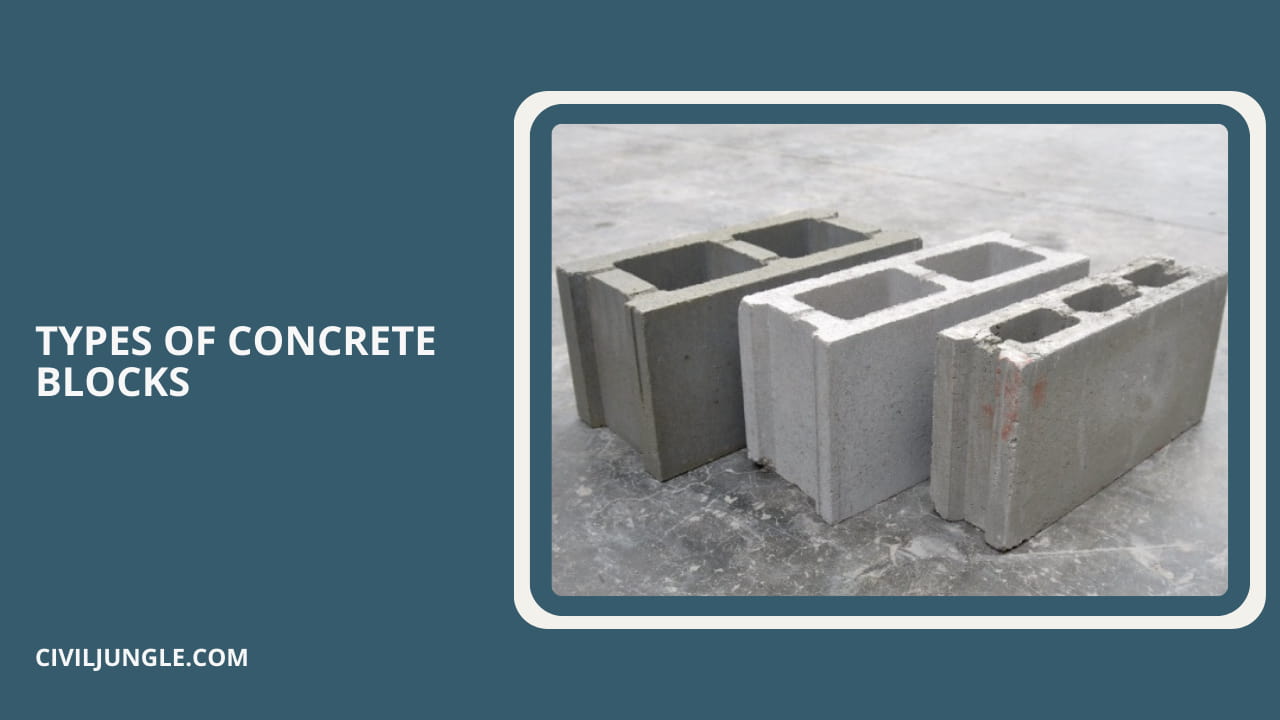
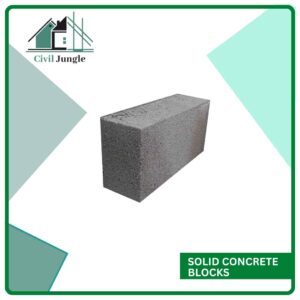
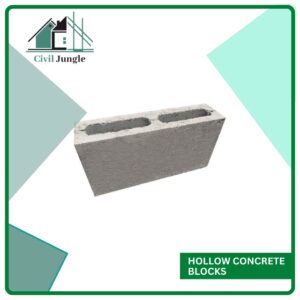
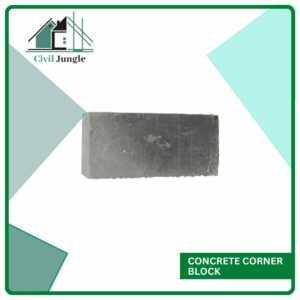
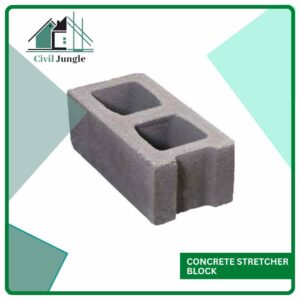
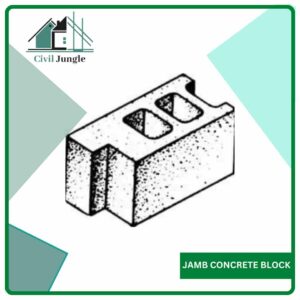
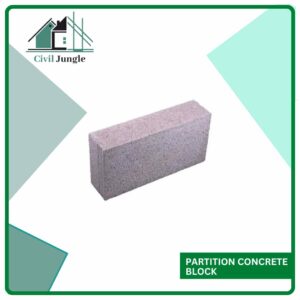

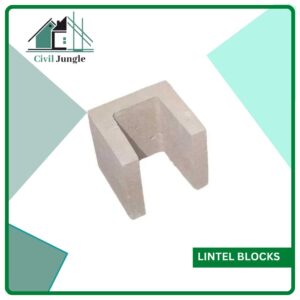
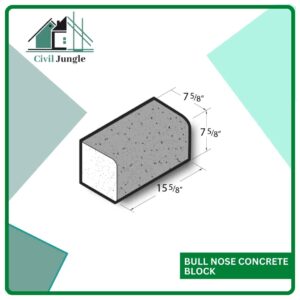
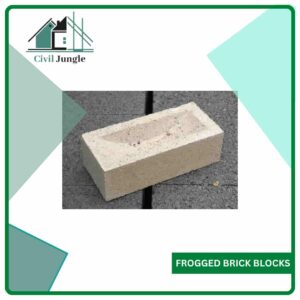
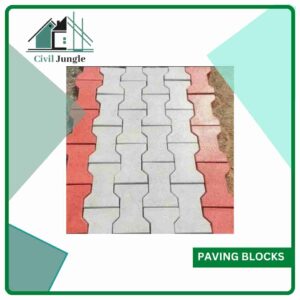


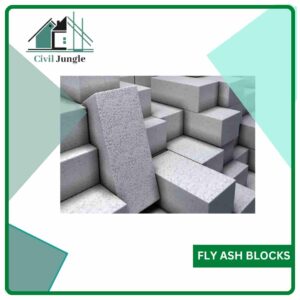
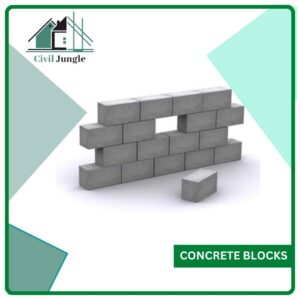

Leave a Reply